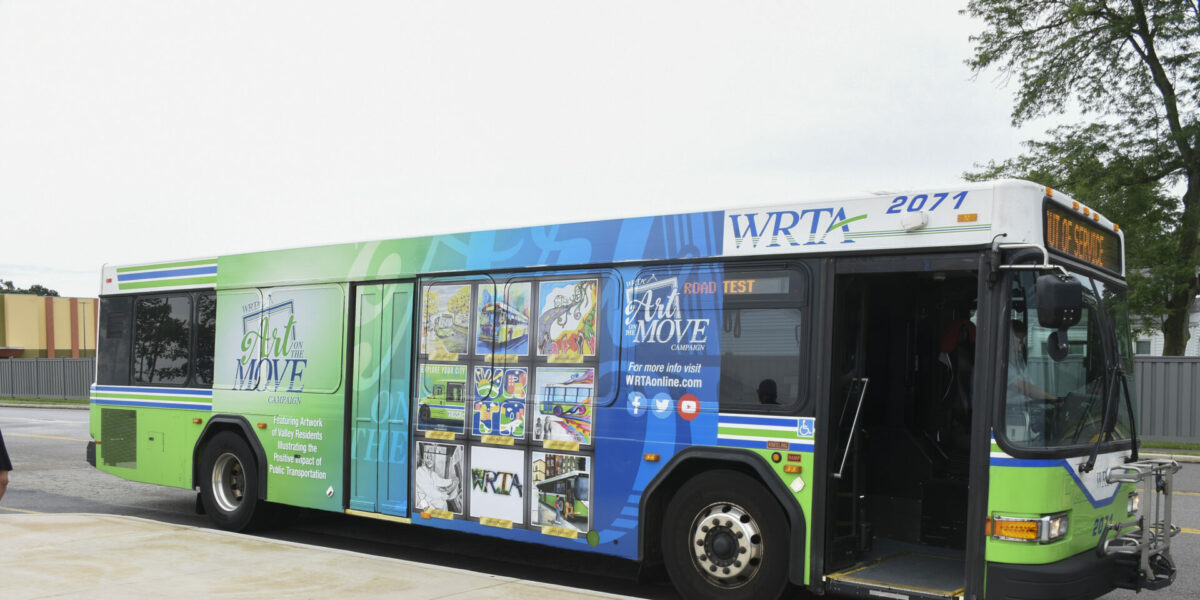Efficient Transit Advertising Philippines to Grow Your Audience
Efficient Transit Advertising Philippines to Grow Your Audience
Blog Article
Comprehending the Duty of Transit Advertising in Enhancing Brand Name Visibility and Consumer Engagement
Transportation marketing has become a critical element in the advertising and marketing landscape, offering one-of-a-kind chances for brand names to raise their presence and engage customers properly. With the capability to reach a varied and captive audience throughout their everyday commutes, these advertising approaches are not merely regarding visibility; they have to do with producing meaningful links with possible consumers. As we explore the diverse advantages and ingenious strategies within transit marketing, it ends up being vital to think about just how these elements collectively affect consumer assumption and actions, raising concerns concerning their lasting effect on brand name commitment.
Definition of Transit Advertising And Marketing
Transportation marketing refers to the practice of promoting products, solutions, or brands via advertisements placed in and around public transport systems. This form of advertising incorporates a selection of placements, including posters on buses and trains, electronic displays at transit stations, and covers on the exterior of vehicles. It intends to get to a diverse audience, taking advantage of the high foot website traffic connected with public transportation.
Transit marketing is strategically positioned to record the attention of travelers, who typically spend substantial time traveling or waiting. By incorporating advertisements right into the everyday routines of individuals, brand names can produce a lasting impact and foster brand acknowledgment. The medium is particularly reliable in urban environments, where public transport is a primary setting of travel.
Additionally, transportation marketing can facilitate local targeting, allowing organizations to reach details demographics based on transit paths and station areas. As metropolitan populaces grow and the use of public transportation increases, this advertising method has actually gained prominence as a vital part of integrated marketing methods. The vibrant nature of transit advertising, combined with its capability to engage customers in a restricted environment, underscores its significance in contemporary advertising practices.
Advantages of Transportation Advertising
The effectiveness of transit advertising and marketing depends on its ability to provide a multitude of benefits to brands looking for to improve presence and interaction. Among the key advantages is the considerable reach it uses; transportation ads can efficiently target varied demographics across metropolitan locations, reaching both pedestrians and commuters alike. This broad exposure substantially enhances brand name recognition.
An additional advantage is the high regularity of perceptions. As transit cars follow recognized paths and stop at multiple locations, they develop recurring direct exposure that enhances brand name messages. This regularity promotes experience, which is vital in customer decision-making.
Transit marketing is likewise economical contrasted to various other media systems. Offered its large reach and possibility for high impacts, brand names often experience a reduced price per thousand impacts (CPM), maximizing their marketing budget.
In addition, transportation ads can develop a feeling of neighborhood connection. By straightening with regional transit systems, brand names can resonate with regional target markets and promote a feeling of regional pride. This local technique improves brand name loyalty and engagement, making transportation advertising an engaging option for businesses intending to solidify their existence out there.

Efficient Strategies for Transportation Campaigns
To optimize the impact of transportation campaigns, brand names should leverage strategic preparation and execution tailored to their target market. Initially, determining the market qualities of the target from this source market using public transportation is crucial. This allows brand names to develop customized messaging that reverberates with prospective clients.
Next, selecting the appropriate transportation mediums is necessary. Whether using bus covers, metro posters, or electronic displays, each tool has one-of-a-kind benefits that can boost presence. As an example, vibrant visuals on bus covers can draw in attention, while electronic ads can be upgraded regularly to reflect timely promos.
In addition, integrating a cohesive branding method throughout transportation systems guarantees consistency and enhances the brand name's identification. Utilizing distinctive designs and memorable taglines will certainly enhance brand recall among commuters.
Finally, timing is a vital factor in carrying out successful transit campaigns. Launching campaigns during top travel hours or regional events can considerably enhance exposure and involvement. By utilizing these methods, brand names can successfully harness the capacity of transit marketing, promoting higher awareness and connection with their target audience. Inevitably, a well-executed transportation project can drive considerable growth in brand visibility and customer involvement.

Determining Effect and Interaction
In examining the efficiency of transit ad campaign, accurate dimension of influence and engagement is vital for brands looking for to maximize their marketing techniques. Metrics such as reach, regularity, and impacts provide fundamental information to examine exposure. Evaluating these elements helps establish the amount of prospective customers are exposed to the promotions during their daily commutes.
Involvement can be more assessed through consumer interactions, such as internet site traffic, social media mentions, and straight responses to calls-to-action included in the advertisements. Utilizing devices like QR codes or distinct URLs can assist in monitoring of customer actions straight linked to transportation projects. Surveys and comments devices also serve as useful approaches to gather qualitative data on customer assumptions and recall of the advertisement.
Additionally, progressed analytics and attribution models can correlate transportation direct exposure with subsequent purchasing habits, supplying insights into the return on financial investment. By employing an extensive technique that incorporates quantitative and qualitative measures, brands can establish a nuanced understanding of their transportation marketing impact. Inevitably, this data-driven method enables brands to refine their campaigns, ensuring they resonate successfully with target market and boost overall brand visibility.
Situation Research Studies of Effective Projects
Effective transportation advertising and marketing projects act as compelling examples of how effective strategies can elevate brand name presence and involvement. Transit Advertising Philippines. One significant situation is the "I Love New York" campaign, which transformed the city's image and attracted numerous tourists. By utilizing metro advertisements, signboards, and bus covers, the project produced a solid, cohesive brand name identification, resulting in a significant uptick in tourist see this page and local service patronage
An additional excellent campaign is Coca-Cola's "Share a Coke" campaign, which leveraged transportation advertising to customize the brand name experience. By including preferred names on promotional materials across different transit platforms, Coca-Cola fostered a deeper psychological link with consumers, motivating them to share their experiences on social media sites.
In addition, the "Got Milk?" project effectively used public transport advertisements to get to a broad audience, enhancing the message of the significance of milk in a well balanced diet. The campaign saw a measurable rise in milk consumption in target demographics.
These instance studies highlight that when implemented attentively, transit advertising can substantially improve brand name visibility, foster customer engagement, and drive measurable outcomes, demonstrating its crucial duty in contemporary advertising and marketing techniques. - Transit Advertising Philippines
Verdict
In verdict, transportation advertising see and marketing offers as a vital tool for enhancing brand visibility and fostering customer involvement. Inevitably, the capacity to gauge involvement and assess effective instance researches emphasizes the performance of transportation advertising in driving brand loyalty and customer communications.
Transportation advertising and marketing has actually arised as a pivotal aspect in the advertising and marketing landscape, supplying unique chances for brand names to raise their presence and involve customers successfully.In addition, transportation advertising can help with local targeting, permitting organizations to get to specific demographics based on transportation courses and terminal places.In evaluating the effectiveness of transportation advertising and marketing projects, exact dimension of impact and engagement is crucial for brand names seeking to maximize their advertising techniques.Successful transportation advertising projects serve as engaging examples of how reliable techniques can boost brand presence and interaction.In conclusion, transportation advertising offers as a crucial tool for boosting brand visibility and cultivating customer involvement.
Report this page